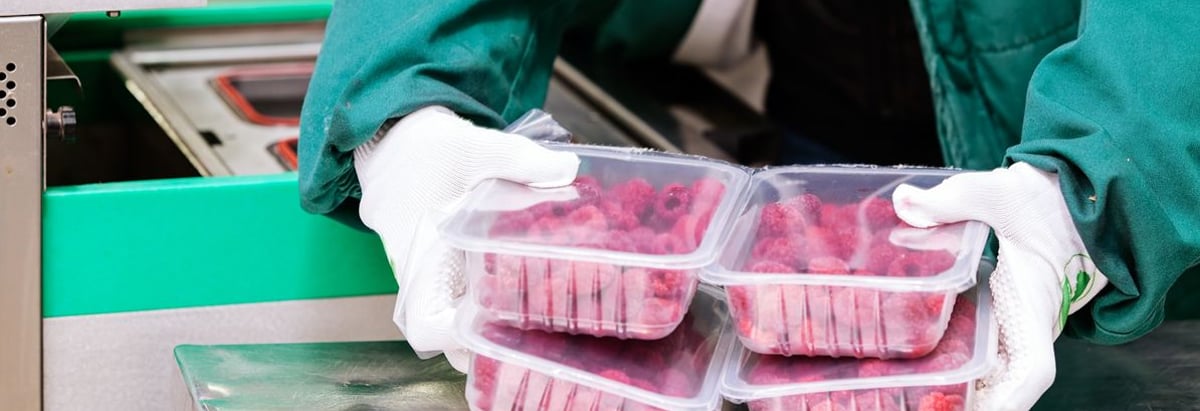- Switzerland
- /
- Food
- /
- SWX:GMI
Groupe Minoteries SA (VTX:GMI): Can It Deliver A Superior ROE To The Industry?

Groupe Minoteries SA (SWX:GMI) delivered a less impressive 5.82% ROE over the past year, compared to the 12.01% return generated by its industry. Though GMI's recent performance is underwhelming, it is useful to understand what ROE is made up of and how it should be interpreted. Knowing these components can change your views on GMI's below-average returns. Today I will look at how components such as financial leverage can influence ROE which may impact the sustainability of GMI's returns. Check out our latest analysis for Groupe Minoteries
Breaking down Return on Equity
Firstly, Return on Equity, or ROE, is simply the percentage of last years’ earning against the book value of shareholders’ equity. For example, if the company invests CHF1 in the form of equity, it will generate CHF0.06 in earnings from this. Investors seeking to maximise their return in the Packaged Foods and Meats industry may want to choose the highest returning stock. However, this can be misleading as each firm has different costs of equity and debt levels i.e. the more debt Groupe Minoteries has, the higher ROE is pumped up in the short term, at the expense of long term interest payment burden.
Return on Equity = Net Profit ÷ Shareholders Equity
ROE is measured against cost of equity in order to determine the efficiency of Groupe Minoteries’s equity capital deployed. Its cost of equity is 8.01%. Since Groupe Minoteries’s return does not cover its cost, with a difference of -2.19%, this means its current use of equity is not efficient and not sustainable. Very simply, Groupe Minoteries pays more for its capital than what it generates in return. ROE can be dissected into three distinct ratios: net profit margin, asset turnover, and financial leverage. This is called the Dupont Formula:
Dupont Formula
ROE = profit margin × asset turnover × financial leverage
ROE = (annual net profit ÷ sales) × (sales ÷ assets) × (assets ÷ shareholders’ equity)
ROE = annual net profit ÷ shareholders’ equity
Essentially, profit margin shows how much money the company makes after paying for all its expenses. Asset turnover shows how much revenue Groupe Minoteries can generate with its current asset base. The most interesting ratio, and reflective of sustainability of its ROE, is financial leverage. We can assess whether Groupe Minoteries is fuelling ROE by excessively raising debt. Ideally, Groupe Minoteries should have a balanced capital structure, which we can check by looking at the historic debt-to-equity ratio of the company. The most recent ratio is 9.26%, which is sensible and indicates Groupe Minoteries has not taken on too much leverage. Thus, we can conclude its below-average ROE may be a result of low debt, and Groupe Minoteries still has room to increase leverage and grow future returns.
Next Steps:
While ROE is a relatively simple calculation, it can be broken down into different ratios, each telling a different story about the strengths and weaknesses of a company. Groupe Minoteries’s ROE is underwhelming relative to the industry average, and its returns were also not strong enough to cover its own cost of equity. Although, its appropriate level of leverage means investors can be more confident in the sustainability of Groupe Minoteries’s return with a possible increase should the company decide to increase its debt levels. ROE is a helpful signal, but it is definitely not sufficient on its own to make an investment decision.
For Groupe Minoteries, I've compiled three fundamental factors you should further research:
- 1. Financial Health: Does it have a healthy balance sheet? Take a look at our free balance sheet analysis with six simple checks on key factors like leverage and risk.
- 2. Valuation: What is Groupe Minoteries worth today? Is the stock undervalued, even when its growth outlook is factored into its intrinsic value? The intrinsic value infographic in our free research report helps visualize whether Groupe Minoteries is currently mispriced by the market.
- 3. Other High-Growth Alternatives : Are there other high-growth stocks you could be holding instead of Groupe Minoteries? Explore our interactive list of stocks with large growth potential to get an idea of what else is out there you may be missing!
New: Manage All Your Stock Portfolios in One Place
We've created the ultimate portfolio companion for stock investors, and it's free.
• Connect an unlimited number of Portfolios and see your total in one currency
• Be alerted to new Warning Signs or Risks via email or mobile
• Track the Fair Value of your stocks
Have feedback on this article? Concerned about the content? Get in touch with us directly. Alternatively, email editorial-team@simplywallst.com
Simply Wall St analyst Simply Wall St and Simply Wall St have no position in any of the companies mentioned. This article is general in nature. We provide commentary based on historical data and analyst forecasts only using an unbiased methodology and our articles are not intended to be financial advice. It does not constitute a recommendation to buy or sell any stock and does not take account of your objectives, or your financial situation. We aim to bring you long-term focused analysis driven by fundamental data. Note that our analysis may not factor in the latest price-sensitive company announcements or qualitative material.
About SWX:GMI
Groupe Minoteries
Engages in the processing and marketing of grain, plant, and food raw materials primarily in Switzerland.
Flawless balance sheet average dividend payer.
Market Insights
Community Narratives




